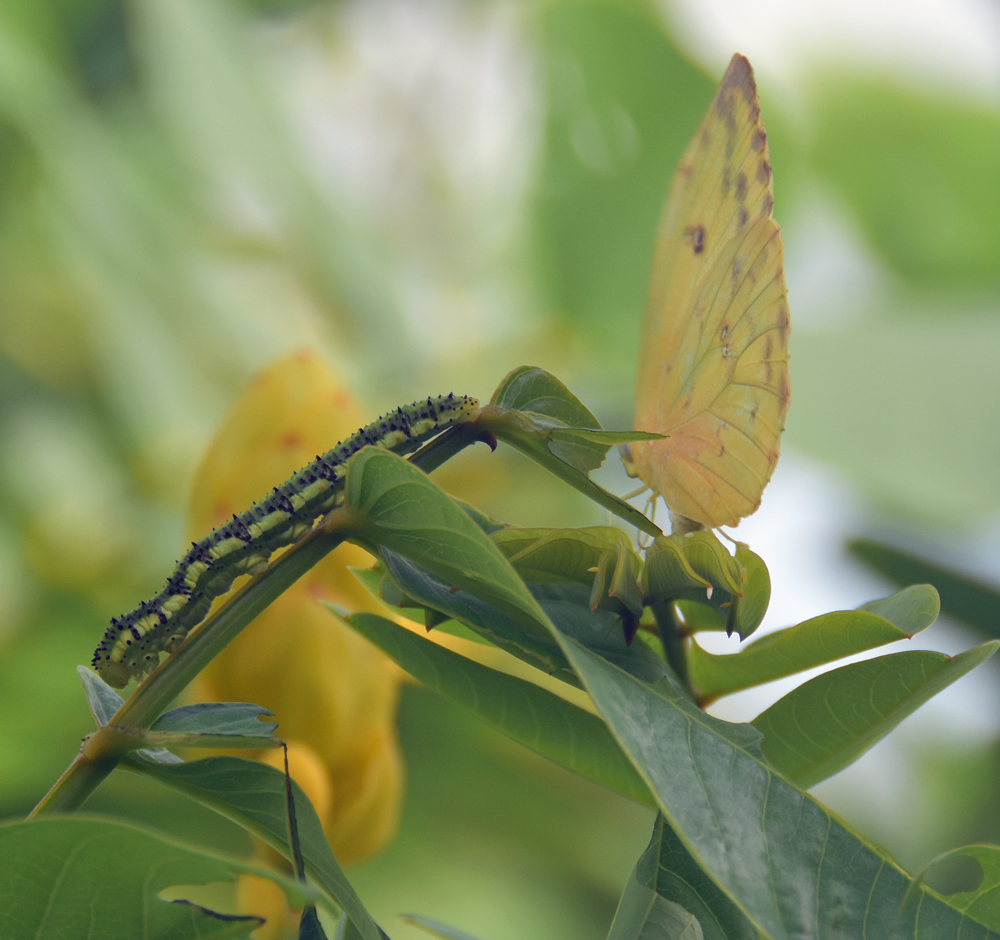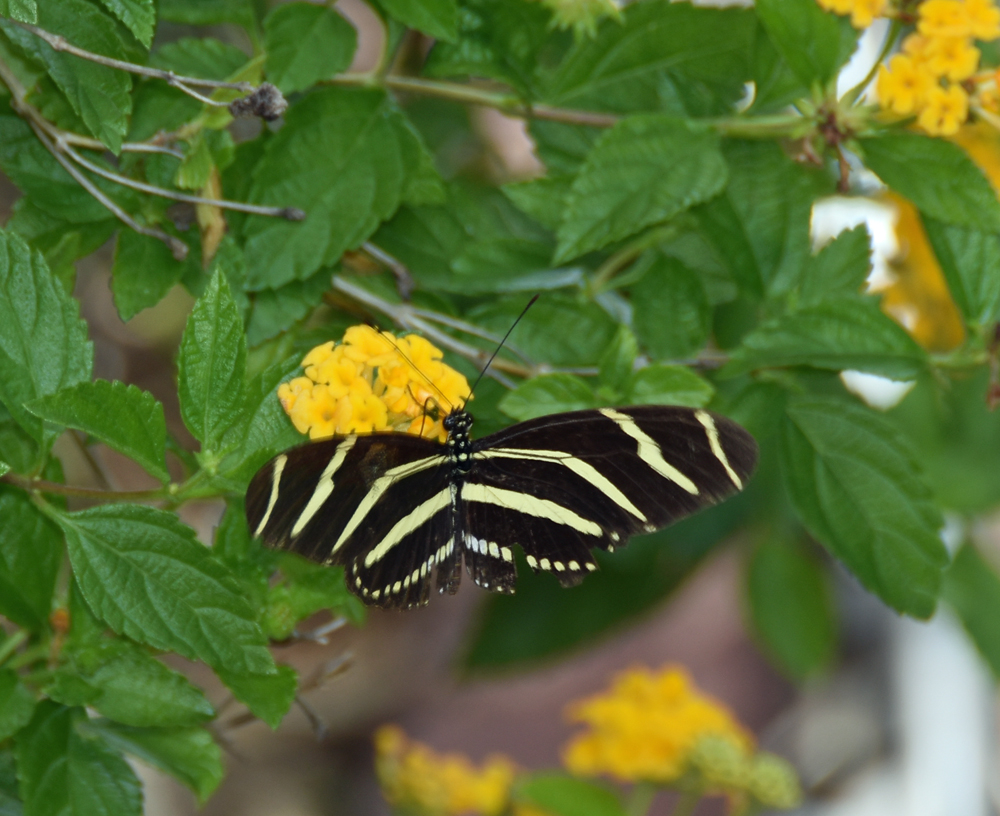August 2022
One of the first beautiful butterflies to appear in my garden 5 years ago was a Orange Barred Sulphur. I quickly did a lot of research on butterflies and caterpillars for my location and discovered that sulphurs are common. So, I continued my quest for more information about their species to include their host plants which are Senna or Cassia plants. The Senna plant comes in a variety of species. I started by buying native senna plants and my rewards have been beautiful.
This year the sulphur butterflies have been especially abundant in number. Daily sightings of a multiple sulphur butterflies bring beautiful brightness and childhood wonder in my garden. I have planted a variety of senna plants over the years and even grow them from seed now. My Sulphur butterflies really enjoy Candlestick Senna, Bahama Cassia, and Privet Senna. And the plants have beautiful bright yellow flowers bringing a extra beauty to the garden. I enjoy a the daily dose of observations watching the sulphurs butterflies.


From early morning I observe sulphur butterflies flying low between the plants ever so spirited. They appear to sense every leaf or plant they fly around, in and out like a beautiful angel. Recently I caught a photo of two mating on top of a large leaf of my philodendron plant. And one just sitting peacefully on a leaf of a Senna plant posing at me with her big twinkling eyes and alert antenna watching back at me.


The Candlestick Senna (Senna alata) plant has grown beautifully in my garden. I started with seeds from last years seed pods, transplanted them as 1 gallon plants and now my Candlestick Senna is an 8 foot tree with a tropical appeal. The senna has multiple branches with veined green leaves that unfold like a fan and spread out into a thick branch with an abundance of yellow brightly colored Candlestick spires. There are multiple small yellow flowers filling each spire. This seems to be a favorite plant for sulfur butterflies to use as host plant. The beautiful yellow flowers attract other pollinators who love the nectar as well. But the ants sure do enjoy tracking up and down the Candlestick tree, my research says nectar glands below the leaves attract the ants and unfortunately many sulfur eggs do not survive. Nature has quite a interesting way of balancing itself…..but that’s another blog post.





WOW…the spring and summer of 2022 has been very active season in my garden for butterflies and other pollinators as I expand and expand my plants some more…. everyday in my garden is grounding to the maximum! Nurtures my soul, bring such joy back when life gets filled with daily chaos!
The Spring started out with growing plants from seed and learning about each plant species. I keep a spreadsheet of all plants I grow in my butterfly garden. Adding new plants brings different species of butterflies also. Each butterfly species has host plant preferences to lay their eggs on. They also have nectar plant preferences which I observe in the garden. Believe it or not they each have there own what I call personality. For example the Monarch Butterfly loves milkweed and senses it what seems like miles away. As soon as I plant or start growing milkweed there’s a Monarch who suddenly flies in to check it out.
On any given day you can visit my Butterfly Garden and observe 10 different species of Butterflies. Some stay most of the day while others like the Giant Swallowtail Butterfly visits, lays eggs, enjoys nectar then flies away with beauty and grace. But the Black swallowtail swoops in on my fennel, parsley lays eggs, enjoys nectar on my plants and often I don’t observe there presence but find their eggs and cats on my herbs. There is always something to observe in my butterfly garden.


Species that are observed on most days are Monarchs, Orange Barred Sulfurs, Swallowtails, Zebra Longwings, Skippers, Gulf Fritillary, Dusky wings, White Peacocks, Cassius Blues and others less frequently observed (I’m not in the garden 24 hours a day) Red Admirals, Queens and Hairstreaks.



One of the most eloquent butterflies to observe in my garden are the Zebra Longwings. They flt around plants in the garden gracefully with their long narrow wings are black with pale yellow stripes. Butterfly Fun Facts: zebra longwings or zebra heliconian are the State Butterfly of Florida. They like other butterfly species have their favorite nectar plants like Lantana. The females lay eggs on Passiflora or passion vine plants as their host plant. Another fun fact I learned is that zebra longwings can also feed on pollen unlike other butterflies who strictly sip on nectar. They have a specialized ability to dissolve pollen in their mouth parts. I observe them slowly flying in and our of my arbor and garden plants frollicking and playing with each other. You’ll enjoy a morning or afternoon sipping a coffee observing these graceful butterflies.
